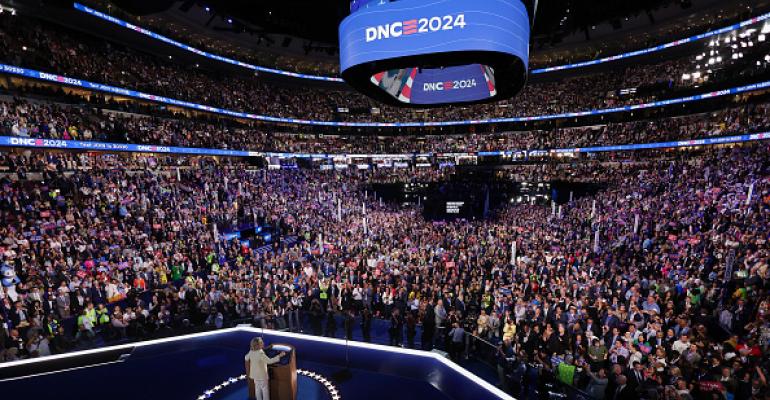As a typical meeting professional, not aligned with a presidential candidate or, say, Taylor Swift, this week’s news that Zoom can now support up to one million simultaneous participants may seem like overkill.
But the possibilities for large-organization all-hands communications are potentially groundbreaking. At giant companies like Walmart, which has about 2.1 million employees; Apple with 1.5 million, or Accenture with 720,000, of course, not everyone has a seat at the annual convention. Bringing CEOs and senior leaders to every employee simultaneously can be a powerful communication tool.
Zoom now offers tiers of single-use webinar packages to accommodate capacities of 10,000, 50,000, 100,000, 250,000, 500,000, and 1 million attendees. Before this change, Zoom offered support for up to 100,000 attendees, and events on Microsoft Teams top out at about 20,000. That’s well under the potential viewership if, for example, CES created a must-see webinar for its 138,000 attendees.
Messaging from the DNC
On the subject of message amplification, Zoom’s announcement this week connects with two trends from the Democratic National Convention now underway in Chicago.
• The Democrats are taking a multichannel, inclusive approach to delivering their conference content, including streaming on YouTube, Instagram, and TikTok for the first time. In addition to those sites, viewers can tune in on DemConvention.com, X, Facebook, Twitch.tv, and Amazon Prime, as well as legacy television channels and device apps (AppleTV, FireTV, and RokuTV). Plus the event is broadcast in English, Spanish, and American Sign Language interpretation.
“With more and more Americans consuming their news in new and innovative ways, Democrats stand ready to meet them where they are,” said DNCC Executive Director Alex Hornbrook.
The Questions: How are you capturing and sharing your conference content? Is it available for later marketing or educational purposes? Is language interpretation built into your inclusivity plans?
• For the first time, the convention has provided press credentials to social-media content creators. About 200 influencers from TikTok, Instagram, and other online outlets have been granted access to all spaces where traditional press is allowed, and the DNC is also coordinating interviews for them. Locking arms with non-traditional, potentially less-predictable media may be a small risk, but influencers are building younger audiences, and driving trust and loyalty.
In addition to inviting influencers inside the August 19-22 event, the DNC took it a step further, inviting a reproductive rights Gen Z blogger, Deja Foxx, to speak on stage.
The Questions: Do you know who the popular and relevant social media influencers are in your market? How are you engaging with them around your live events?
Don't miss a thing! Join the conversation. Sign up for our e-newsletters HERE, and connect with us on LinkedIn!





